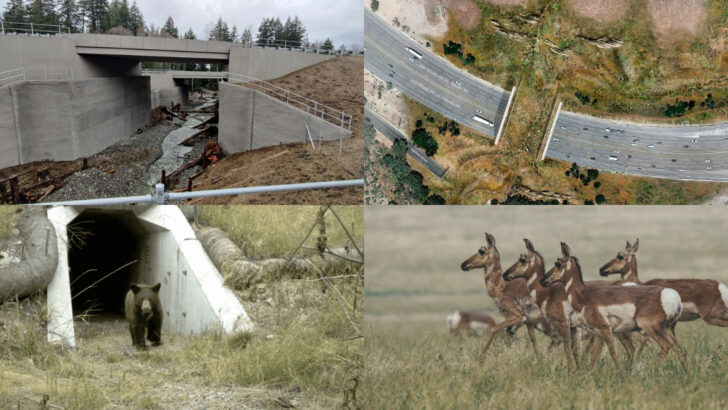America’s vast landscapes are not just home to bustling cities and sprawling suburbs; they are also rich ecosystems where wildlife thrives. As development encroaches on natural habitats, roads and highways become both barriers and lifelines for animals.
This blog post explores fifteen remarkable wildlife roadblocks across the United States, highlighting how they impact our daily travels while connecting us with the natural world.
Florida’s Panther Crossings
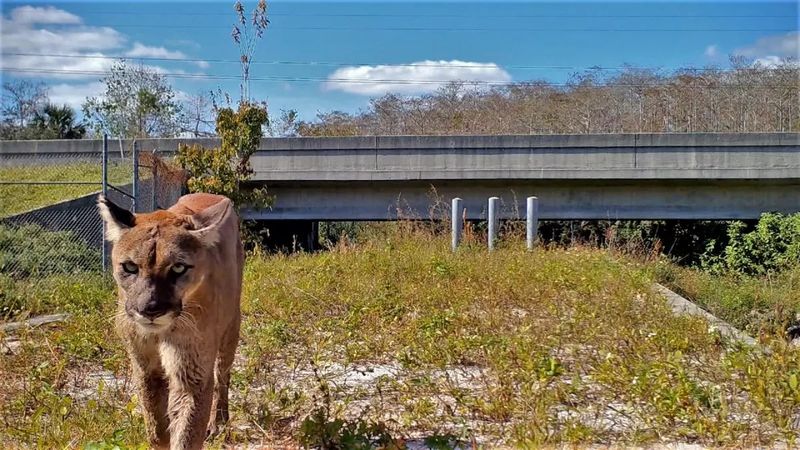
In the heart of Florida, a unique series of underpasses designed to safeguard the endangered Florida panther can be found. These crossings aim to reduce the number of panthers killed by vehicles, reflecting a critical intersection of human development and wildlife conservation.
Spanning across highways, these passages are vital for maintaining genetic diversity among the panther population. They serve as a poignant reminder of the importance of habitat connectivity.
As drivers zoom above, life quietly continues below, showcasing a harmonious balance between progress and preservation. Florida’s commitment to its native species is evident here.
California’s Wildlife Bridges
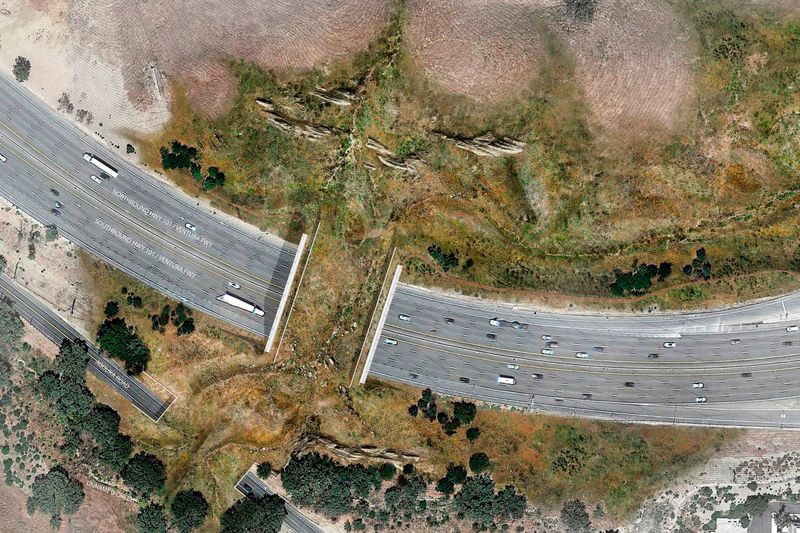
Nestled above busy Californian highways, wildlife bridges are engineering feats that allow animals to cross safely. These overpasses are planted with native vegetation, creating a natural pathway that encourages various species to traverse them.
As urban sprawl stretches further into the wild, these bridges are pivotal in preventing habitat fragmentation. The seamless blend of infrastructure and environment ensures animals like deer and coyotes have a safer journey.
California illustrates how innovation can coexist with natural ecosystems. It’s an imaginative response to a pressing ecological challenge, fostering coexistence between man-made structures and wildlife.
Montana’s Grizzly Bear Corridors
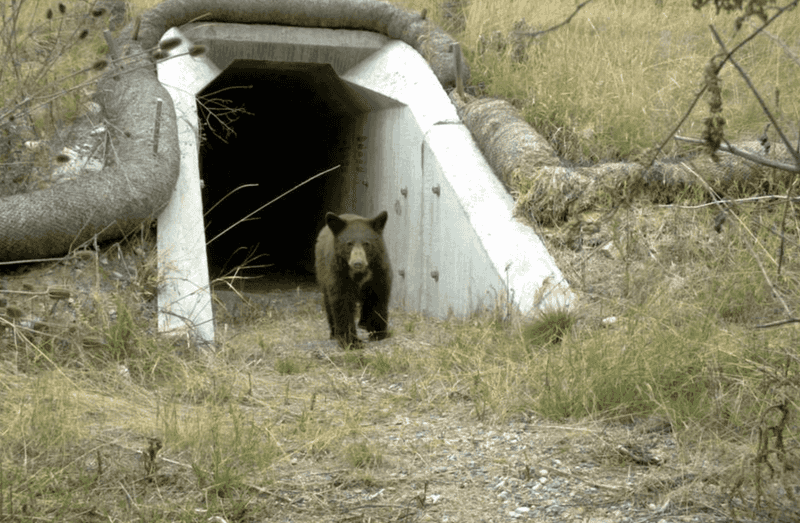
In Montana, designated corridors help grizzly bears move between their habitats without human interference. These pathways are crucial for reducing bear-human conflicts and preserving grizzly populations.
Nestled in the rugged landscapes, the corridors mimic natural routes, allowing bears to follow their instincts. They are carefully planned to avoid populated areas, enhancing safety for both bears and humans.
As bears roam these areas, they maintain the ecological balance critical to Montana’s wilderness. The corridors highlight the state’s dedication to wildlife sustainability, promoting peaceful coexistence.
It’s a model for other regions grappling with similar issues.
Wyoming’s Pronghorn Migration Paths
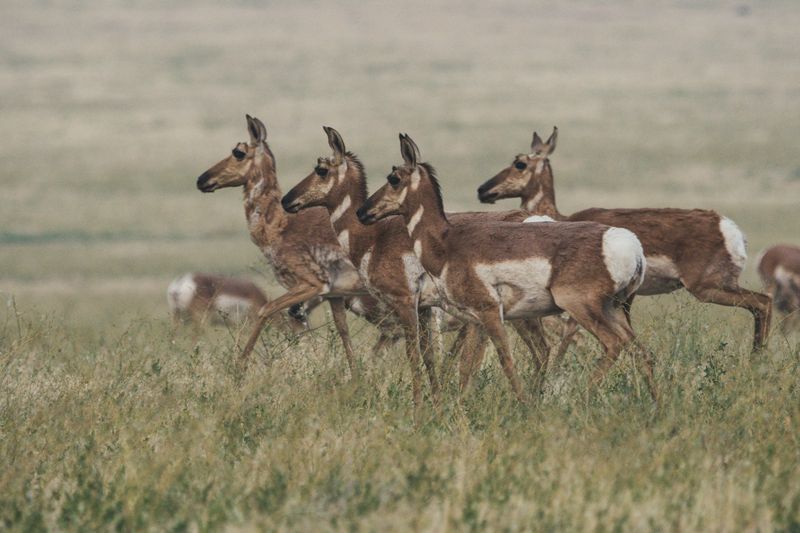
Pronghorns, North America’s swift antelopes, rely on Wyoming’s migration paths to traverse vast distances. These designated routes are essential for pronghorns’ seasonal migrations, allowing safe passage across highways and fences.
The paths are carefully maintained to prevent disruptions, ensuring the pronghorns’ journey is as seamless as the wind-stirred plains they inhabit. Conservation efforts focus on keeping these routes open and uninterrupted, emphasizing the delicate balance between infrastructure and wildlife needs.
It’s a testament to Wyoming’s proactive approach in protecting its natural heritage. The pronghorns’ journey through these paths is a spectacle of nature’s endurance.
New Jersey’s Salamander Tunnels
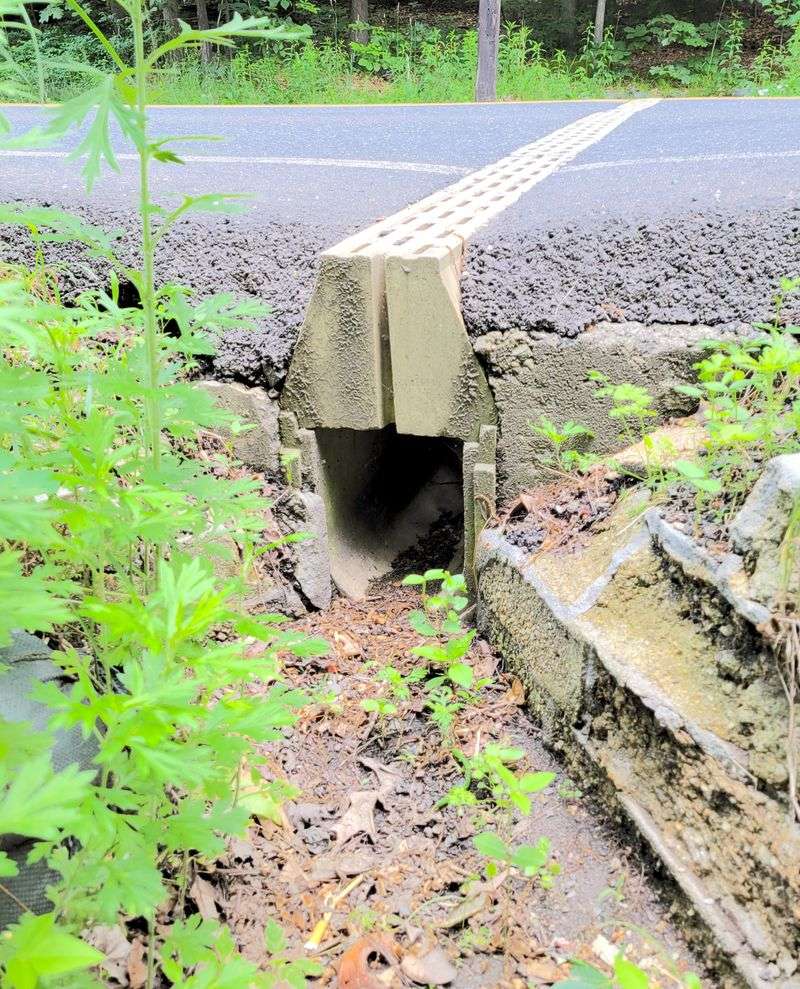
Beneath New Jersey’s forested roads, small tunnels cater to the needs of migrating salamanders. These amphibians face perilous journeys during breeding seasons, and the tunnels provide a safe passage.
They are strategically placed to connect critical habitats, reducing road mortality significantly. The initiative speaks volumes about community involvement in wildlife conservation, highlighting how small-scale projects can yield significant results.
The tunnels are subtle yet impactful, showcasing a commitment to coexistence with nature’s smaller creatures. In these earthy corridors, salamanders continue their age-old rituals undisturbed, a tribute to New Jersey’s innovative conservation strategies.
Washington’s Salmon Underpasses
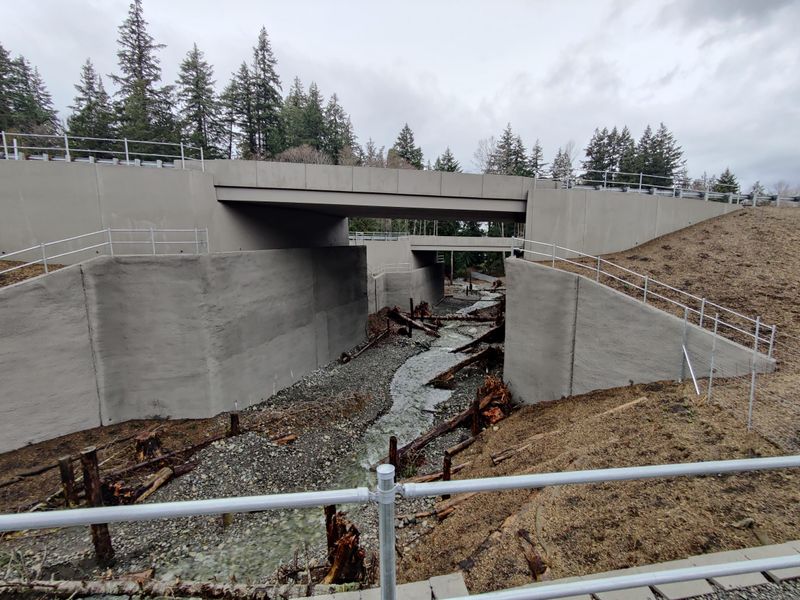
In Washington, underpasses allow salmon to navigate streams beneath roadways. These structures are vital during spawning season, enabling fish to reach upstream breeding grounds.
By retrofitting culverts and creating fish-friendly passages, Washington is safeguarding its iconic salmon populations. The underpasses are engineered to mimic natural stream conditions, ensuring the salmon’s journey remains unimpeded.
As traffic flows above, life continues below, reminding us of the interconnectedness of ecosystems. This initiative underscores the state’s commitment to preserving its natural resources while accommodating human infrastructure.
It’s an inspiring example of thoughtful environmental stewardship.
Colorado’s Elk Crossings
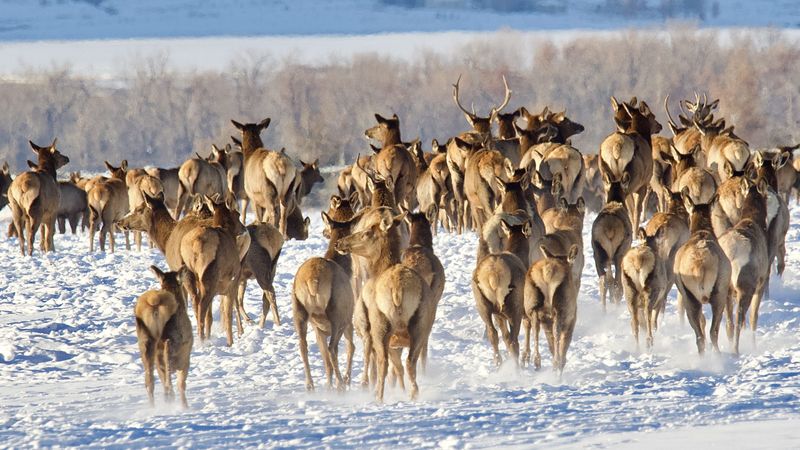
High in Colorado’s mountains, elk crossings facilitate safe passage for these majestic creatures. The overpasses are designed to blend seamlessly into the landscape, guiding elk across busy roads without incident.
Built with native materials, they resemble natural ridgelines, encouraging wildlife use. The crossings are crucial during migration seasons when elk move between feeding and breeding areas.
By reducing vehicle collisions, they enhance safety for both humans and animals. Colorado’s approach to wildlife management highlights the importance of ecological considerations in road design.
These crossings showcase how thoughtful planning can lead to harmonious coexistence.
Texas’ Bat Bridges
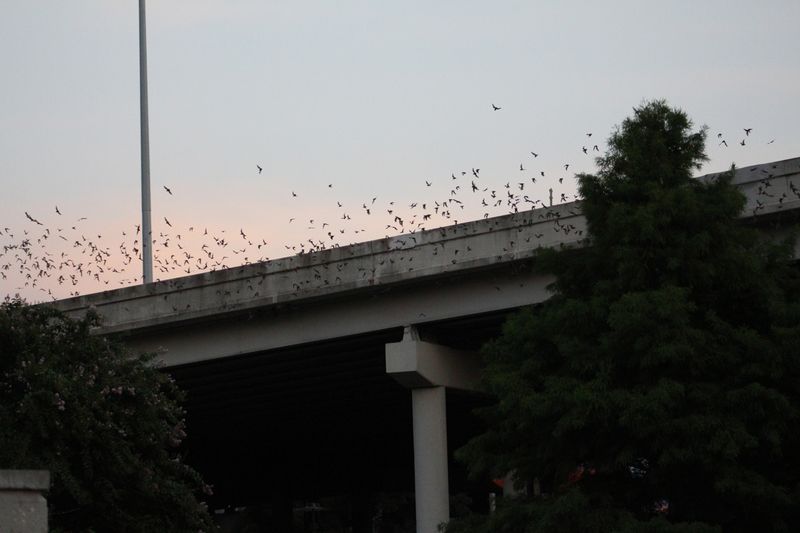
In urban Texas, certain bridges double as roosting sites for bats. At nightfall, these creatures emerge in large numbers, creating an awe-inspiring spectacle.
The bridges provide a safe haven for bats, supporting their ecological role in pest control. They illustrate an ingenious use of urban infrastructure for wildlife habitation.
This relationship between city life and nature is beneficial, underscoring the bridges’ ecological importance. Bats’ nightly flights remind us of the hidden wildlife thriving in metropolitan areas.
Texas’ bat bridges are a testament to integrating wildlife needs into city planning, balancing urban growth and natural habitats.
Maine’s Moose Crossings
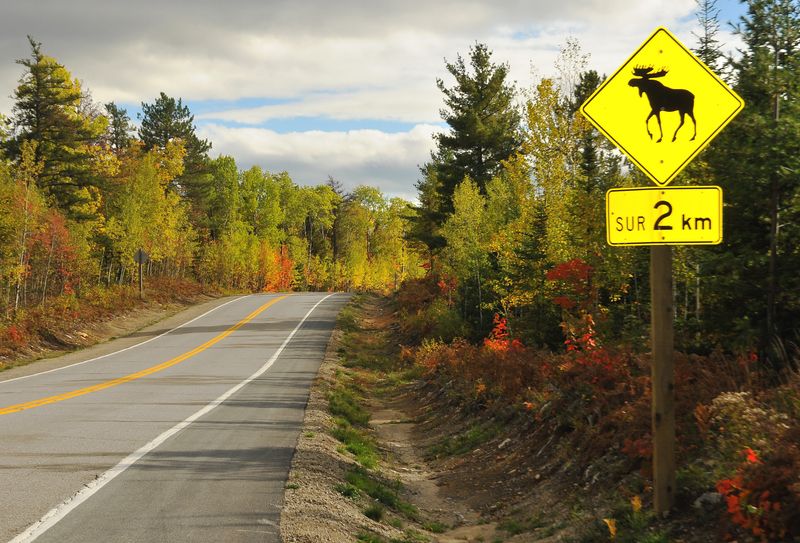
Maine’s forests are home to majestic moose, and special crossings help them traverse roads safely. These areas are marked with signage and fencing to guide moose away from busy highways.
The crossings are essential for reducing collisions, protecting both moose and motorists. They reflect Maine’s dedication to preserving its wildlife while ensuring public safety.
During migration, moose use these pathways to access different parts of their habitat, maintaining ecological balance. The state’s proactive measures exemplify successful wildlife management.
Moose crossings are a thoughtful blend of safety and conservation, preserving Maine’s natural heritage.
Arizona’s Jaguar Corridors
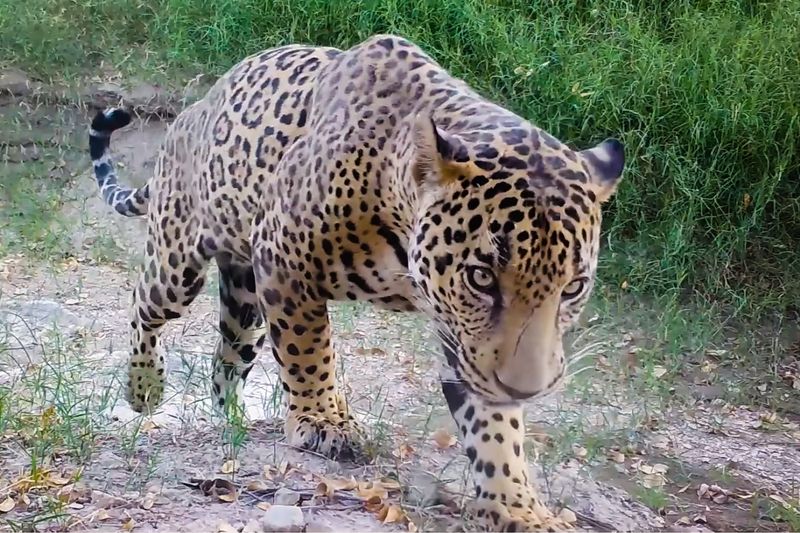
In Arizona, designated corridors are crucial for the elusive jaguar, allowing it to roam freely across the desert. These pathways are designed to connect fragmented habitats, providing safe passage for jaguars.
They are carefully planned to avoid human-populated areas, promoting peaceful coexistence. The corridors ensure genetic diversity and are vital for the species’ survival.
Arizona’s landscape offers a challenging environment, making these corridors essential for maintaining jaguar populations. This initiative highlights efforts to protect the unique biodiversity found in the region.
Jaguars are a symbol of wild America, and these corridors keep their legacy alive.
Alaska’s Caribou Routes
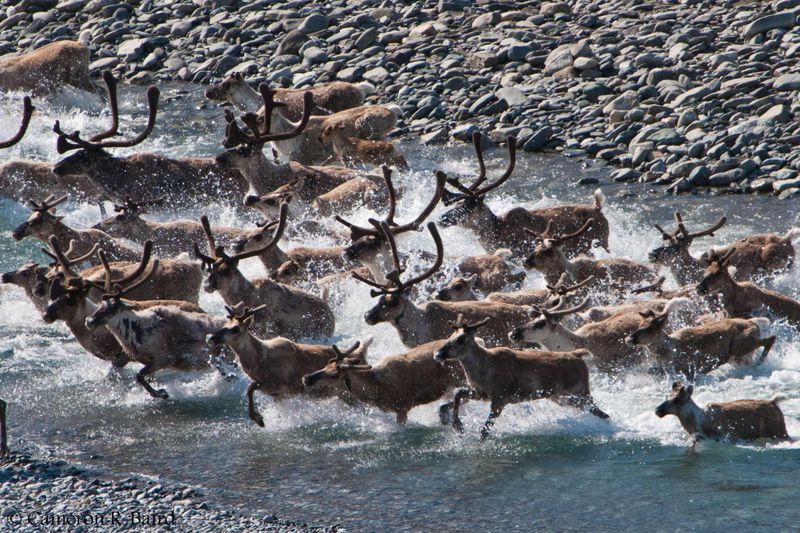
Alaska’s caribou routes are legendary pathways that have guided the animals for generations. These routes are crucial for the caribou’s seasonal migrations, facilitating their movement across the tundra.
They ensure the caribou can access vital feeding grounds and are integral to maintaining ecological balance. The routes are respected by local communities, who understand the importance of these ancient trails.
In Alaska, the harmony between wildlife and humans is evident, as caribou continue their age-old journeys. These routes are a testament to the resilience of nature and the importance of protecting migratory paths.
Oregon’s Frog Fences
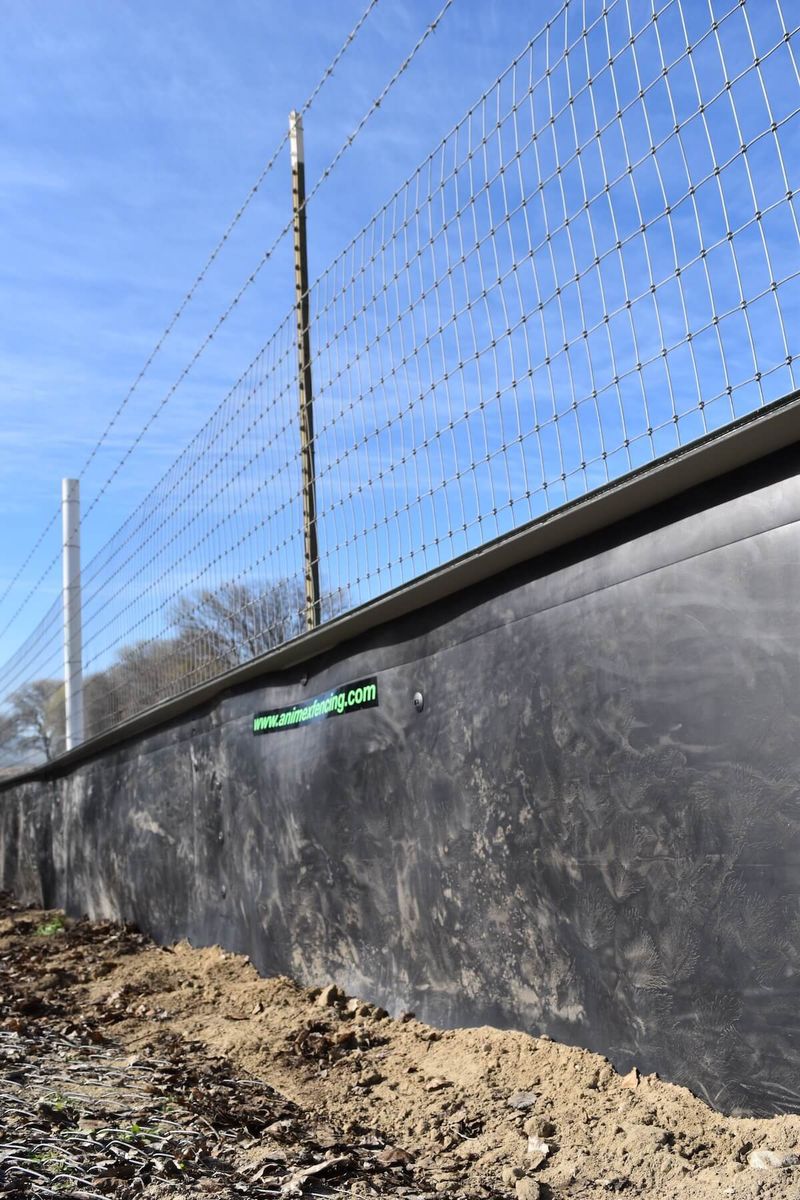
Frog fences in Oregon are a simple yet effective solution to protect amphibians during their breeding migrations. These small barriers guide frogs away from roads, reducing mortality rates significantly.
During peak migration times, volunteers often assist in helping frogs across. This community effort highlights the importance of grassroots conservation initiatives.
The fences blend into the wetland environment, ensuring minimal disruption to the landscape. Oregon’s approach reflects a broader commitment to preserving biodiversity, recognizing the role of even the smallest creatures.
These fences exemplify how local actions can lead to impactful results in wildlife conservation.
New York’s Turtle Crossings
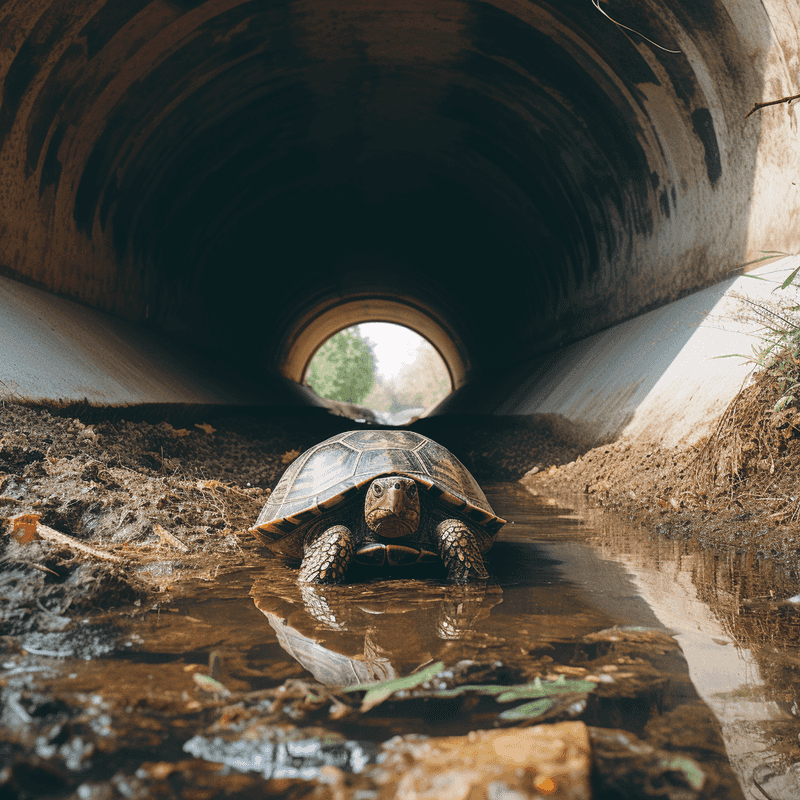
New York’s turtle crossings are vital for ensuring these slow-moving reptiles have safe passage across roads. These crossings feature signage and underpasses tailored to turtle needs.
By reducing road mortality, they contribute to the conservation of local turtle populations. The crossings are strategically located near wetlands, enhancing habitat connectivity.
This initiative is an example of how infrastructure can accommodate wildlife. As turtles continue their ancient journeys, these crossings play a crucial role in their survival.
New York’s strategy demonstrates a commitment to biodiversity, emphasizing the importance of integrating wildlife needs into urban planning.
Idaho’s Deer Fences
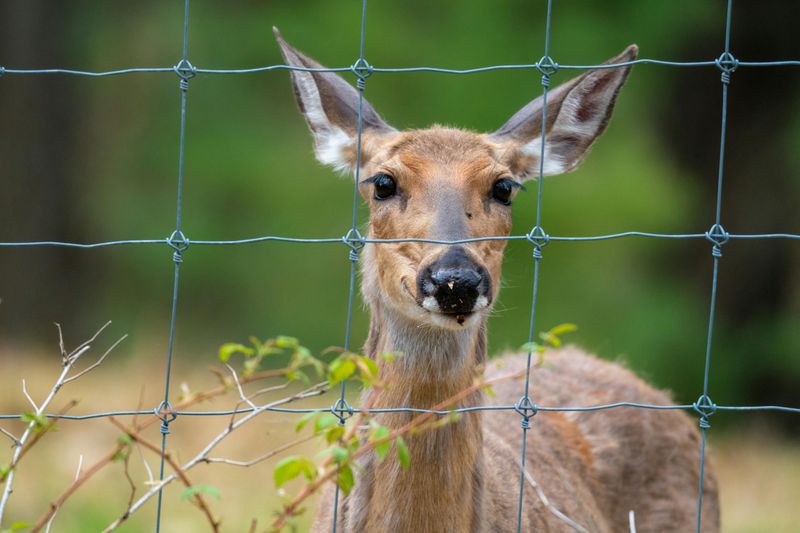
In Idaho, deer fences are a practical approach to minimizing vehicle collisions. These tall barriers line highways, directing deer towards safer crossing points.
The fences are designed to blend into the rural landscape, preserving its natural beauty. They are particularly crucial during peak migration periods when deer move between habitats.
By reducing accidents, these fences protect both deer and drivers. Idaho’s proactive measures highlight the importance of considering wildlife in transportation planning.
The deer fences are a testament to thoughtful design and the state’s commitment to harmonious coexistence with nature.
Nevada’s Desert Tortoise Crossings
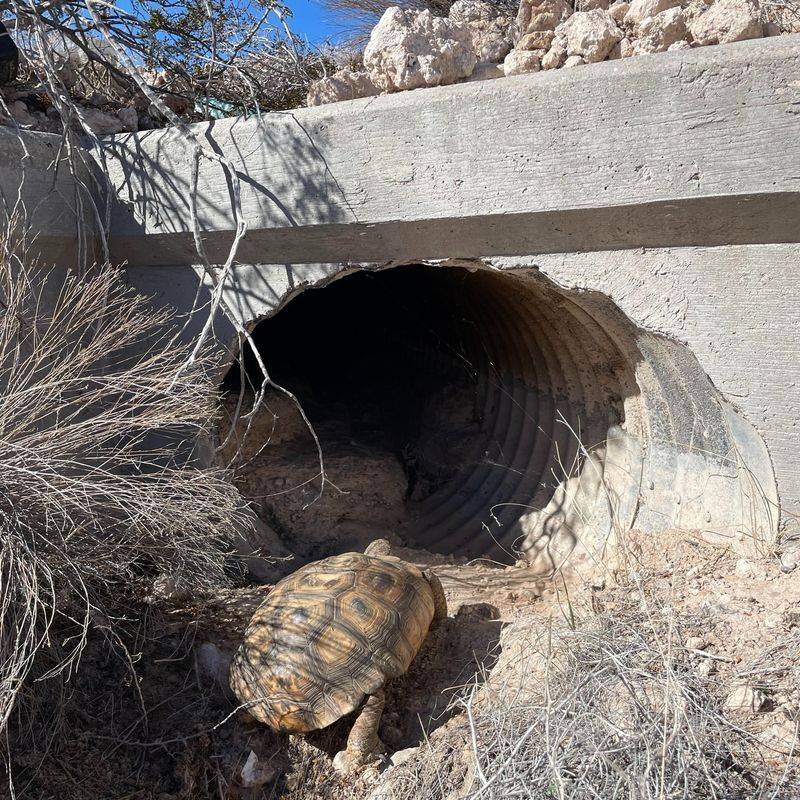
Nevada’s desert tortoise crossings provide essential safe passage for these ancient reptiles. The underpasses are strategically placed to connect fragmented habitats, allowing tortoises to navigate freely.
These crossings are crucial for reducing mortality rates, particularly in areas where roads intersect prime habitat. Nevada’s desert environment presents unique challenges, making these structures vital for the tortoise’s survival.
Conservation efforts focus on maintaining these passages, ensuring long-term habitat connectivity. Nevada’s approach is a model for protecting species in harsh environments.
The tortoise crossings are a symbol of resilience and the importance of preserving natural habitats.

